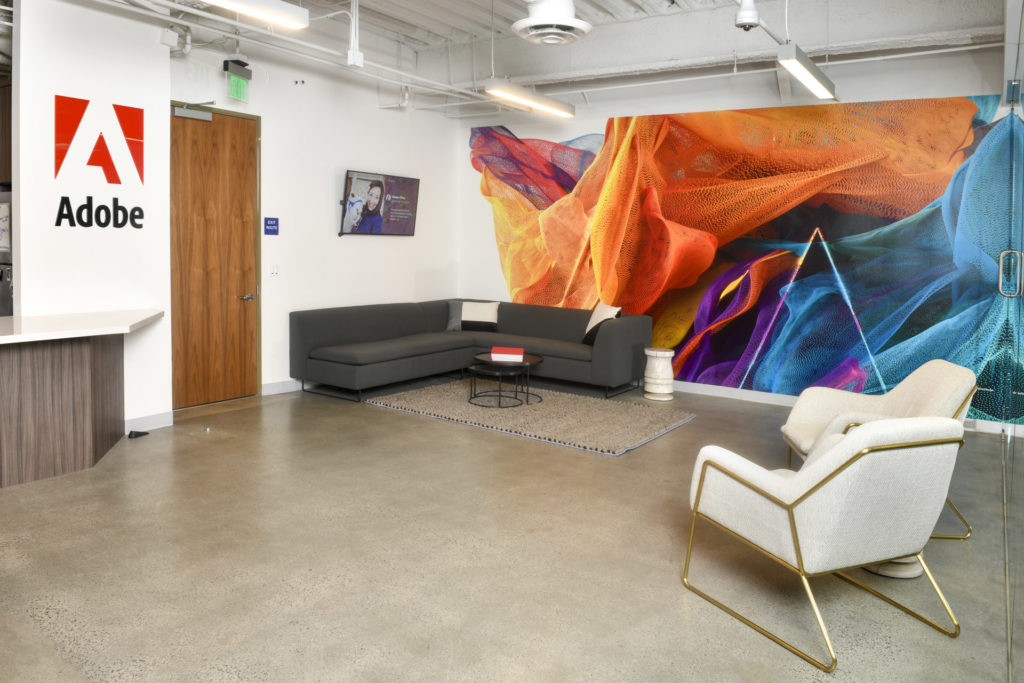Adobe recently opened a new facility in Santa Monica located at 429 Santa Monica Blvd in an effort to reach out to the Hollywood film and television industry. Similar to Canon’s facility that I wrote about a while back, Adobe’s location is a facility designed for relevant film industry professionals to test out and give feedback on the Adobe suite of products in their showpiece edit suite, featuring support for next-gen entertainment technology including VR/AR, HDR capabilities, and an optimized sound environment.
Adobe has been an ever-present option when it comes to editing, launching Premiere at the end of 1991, but recently they’ve become a stand-out contender. Common wisdom said Avid owned the professional space until Apple stepped up with Final Cut, which soon resulted in almost half of the industry switching (according to Wikipedia, at least) but as Apple, some would argue, abandoned their professional base in favor of enthusiast editors with Final Cut X, a space grew for a new king on the block. Even Walter Murch, a famously Apple-centric editor, recently made the switch to Premiere. With cross-platform products becoming the standard and the Mac slowly losing its image as the “creative’s choice” in favor of the raw customization power afforded by PCs, a platform-independent product has also fallen into favor. Adobe took their shot.
It was a long time coming, but with David Fincher making the switch to Premiere CC for Gone Girl, Adobe officially had a battle-tested suite of tools on their hands capable of appeasing one of the most demanding directors in the business. Adobe worked close with Fincher during the production to make sure he had every tool he needed, adding features when necessary. While those features were initially only available in the “Friends & Family” build of the Creative Cloud suite, Adobe eventually began their current practice of pushing all Hollywood-centric features to their retail customers as well, resulting in a set of products that are forged in the fires of big-budget productions but available for everyone. The “replace with After Effects comp” functionality, for instance, was demanded by Fincher as he is constantly stitching together different takes from scenes and erasing/modifying things in the frame, and is a feature that I use just as much in my own work. He also may have been the source of the “in the trunk” preset in the Essential Audio panel.
Shows recently edited in Premiere include Deadpool, Swiss Army Man, Mindhunter, Hail Caesar!, Atlanta, and 6 Below, edited natively in 6K on Dell Precision PCs with no proxies!
The main feature of the new Adobe facility is the aforementioned edit bay. In it, they’ve got a PC and Mac set up to edit with three displays, a 5.1 surround sound system, and a stunning 77” OLED HDR wallpaper television from LG on the wall. As this facility is intended for larger-scale Hollywood clients, they’ve got an entire locked film available for prospective producers, editors, and directors to “kick the tires” with. I can’t tell you which film but you’ve probably seen it. So that’s cool.
The brilliance of where Adobe is headed with their suite of products is that -theoretically- you can do your entire post-production process with it, primarily in Premiere, from ingest to DCP (the latter of which literally saves you thousands of dollars). You’ve got your traditional editing features in Premiere, you can easily round-trip through After Effects for effects, titling, and so forth, you have a host of audio plugins with Audition at the ready for heavy lifting, and there’s Lumetri (which is constantly being updated) for general color correction and looks building.
While you probably won’t be able to utilize this new facility, you can be sure that the work going on in there will benefit you greatly if you’re a Creative Cloud user, and that’s something we can all get excited about. By providing local high-level professionals a place to give input into the tools we all use, you’ll be getting better and more frequent game-changing updates to your software that you know will probably surpass your needs, but will be there for you when you finally do need it. Familiarity with your tools is crucial in this industry, and being able to stay in one ecosystem as it becomes more and more integrated into the upper echelons of the business is fantastic.


